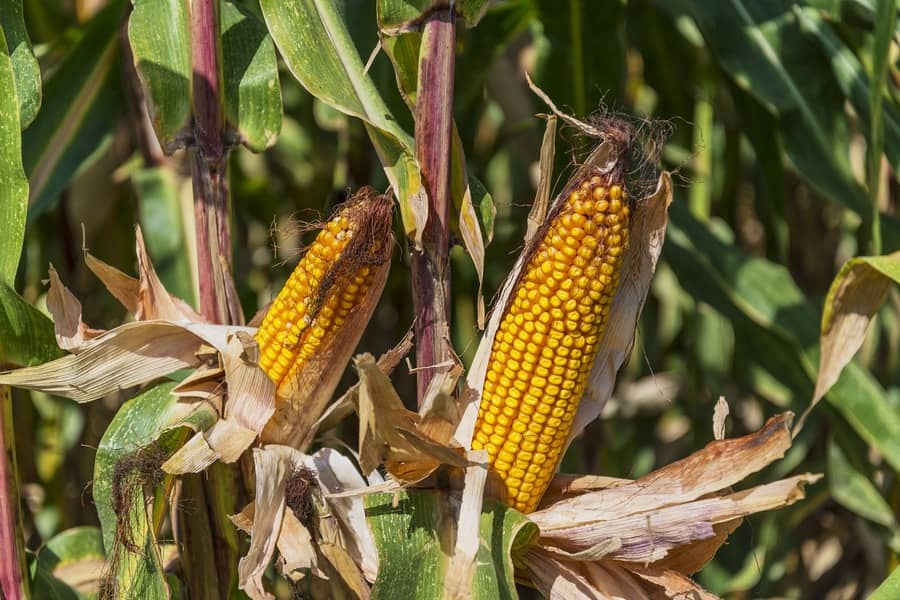USDA will bring strong adjustments to supply and demand of corn this week
Porto Alegre, July 11, 2023 – The US crop of corn was moved by the variables of adverse weather in June, but with a strong game of information in the environment of price formation. The June drought left borderline situations for crops in their development and generated an environment of expectations for the reversal of the production projection numbers. July arrived with good rains in much of the Midwest, reducing (but not fully solving) soil moisture conditions to provide security for the critical phase of final production in the coming few weeks. Also on Wednesday, USDA will update its supply and demand estimate, with the promise of major changes in view of the necessary correction of both acreage and yield. A large part of the adjustment has already been projected by the market, and therefore the climate scenario will still prevail for prices.
The conditions of US crops improved little last week, in spite of the evident improvement in the rainfall regime already at the end of June. Crops improved from 50 to 51% in good to excellent conditions. In practice, the perception of crop deterioration is always faster than that of improvement. In any case, July entered confirming a better rainfall regime in the first eight days of the month. Unfortunately, it is still uneven for the entire region, with some places having precipitation of 25 mm and others of up to 100 mm over the week. This irregularity is what has marked the disparate expectations among market agents. Some point to inevitable losses, while others believe in reasonable improvements with the rain.
We believe that both sides may be right, but that still depends on the weather for the next thirty days. Corn crops began to enter pollination in late June, with 9% of them entering the critical stage for production, with the possibility of rising to 20% this week. For the next two weeks, 100% of crops will be pollinating and silking. At that stage, weather conditions will need to be favorable, with normal average temperatures and regular rainfall. An increase in temperatures and a cut in rainfall will be fatal for the projection of the US production.
On the next 12th, USDA will update its supply and demand estimate. As we already pointed out in our last edition, the first major adjustment will be on the area to be planted and reaped relative to the June 30 report. The area will be announced on the 30th, 94.1 mln acres, the third-largest one in history and almost 5.5 mln acres above 2022. The second major adjustment will be on the area to be reaped, which could rise from 83 to 85 mln acres, already considering some weather-induced losses. This is an adjustment that tends to be bearish for the market but already priced since the June 30 report.
The big unknown variable is yield adjustment. Owing to crop conditions disclosed by USDA itself, at 51% in good to excellent conditions up to last week, against 64% in the same period last year, it would not be abnormal that the market expects a strong adjustment in yield, currently projected at the unprecedented record of 181.5 bushels/acre. In a better crop condition, the 2022 yield hit 173.3 bushels/acre. The department has until January to adjust this yield, which, at this moment, will only be an estimated adjustment. The market consensus came in at 175.8 bushels/acre for the July report, with potential production of 15.1 bln bushels or 384 mln tons, close to the latest national record, considering the market projection of an area to be reaped of 86 mln acres.
For this week’s prices, the projection of production above this level could generate an environment of greater pressure on the CBOT. A surprising larger-than-expected cut, without a doubt, could drive the market to some short-term price readjustment. Stocks will remain much higher than the current 37 mln tons. Perhaps they will not be at the initially projected level of 57 mln, but 54/55 mln are fully adjusted stocks for the new crop.
After this report, USDA may have given the market adjustments induced by the June drought. So, we will have another thirty days, at least, of weather conditions in the critical phase of crops to generate volatility on the CBOT and start projecting the 2023 crop in a more concrete way. September/23, near USD 4.90 a bushel, which is still high if we evaluate the chance of stocks much higher than the current ones. However, the surprise is the support of the December contract still above the September prices. Generally, the December contract prices in the entire US crop and is pegged below September.
Follow the Safras Agency on our website. Also follow us on our Instagram and Twitter and stay on top of the main agribusiness news!
Copyright 2023 – Grupo CMA

